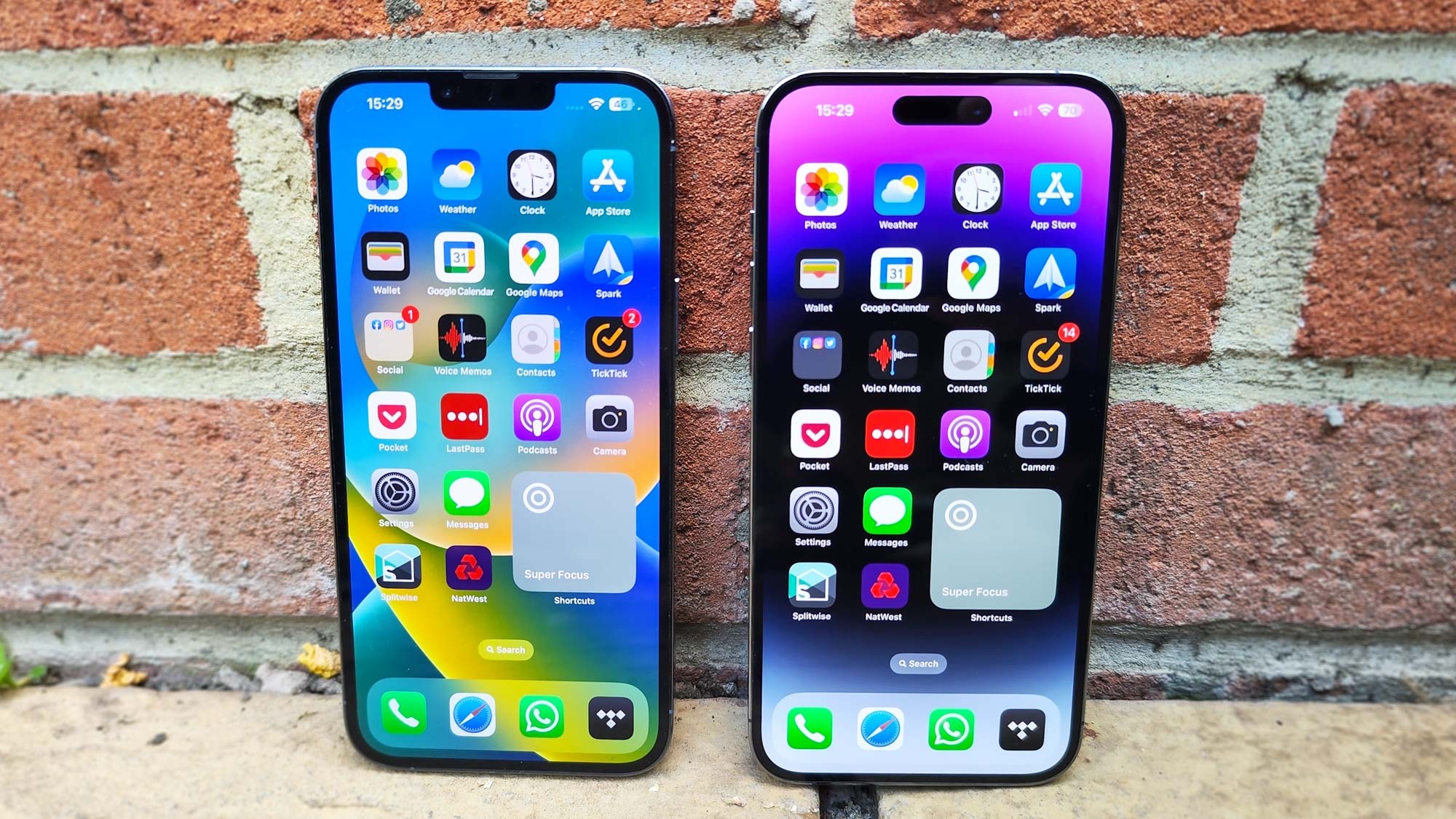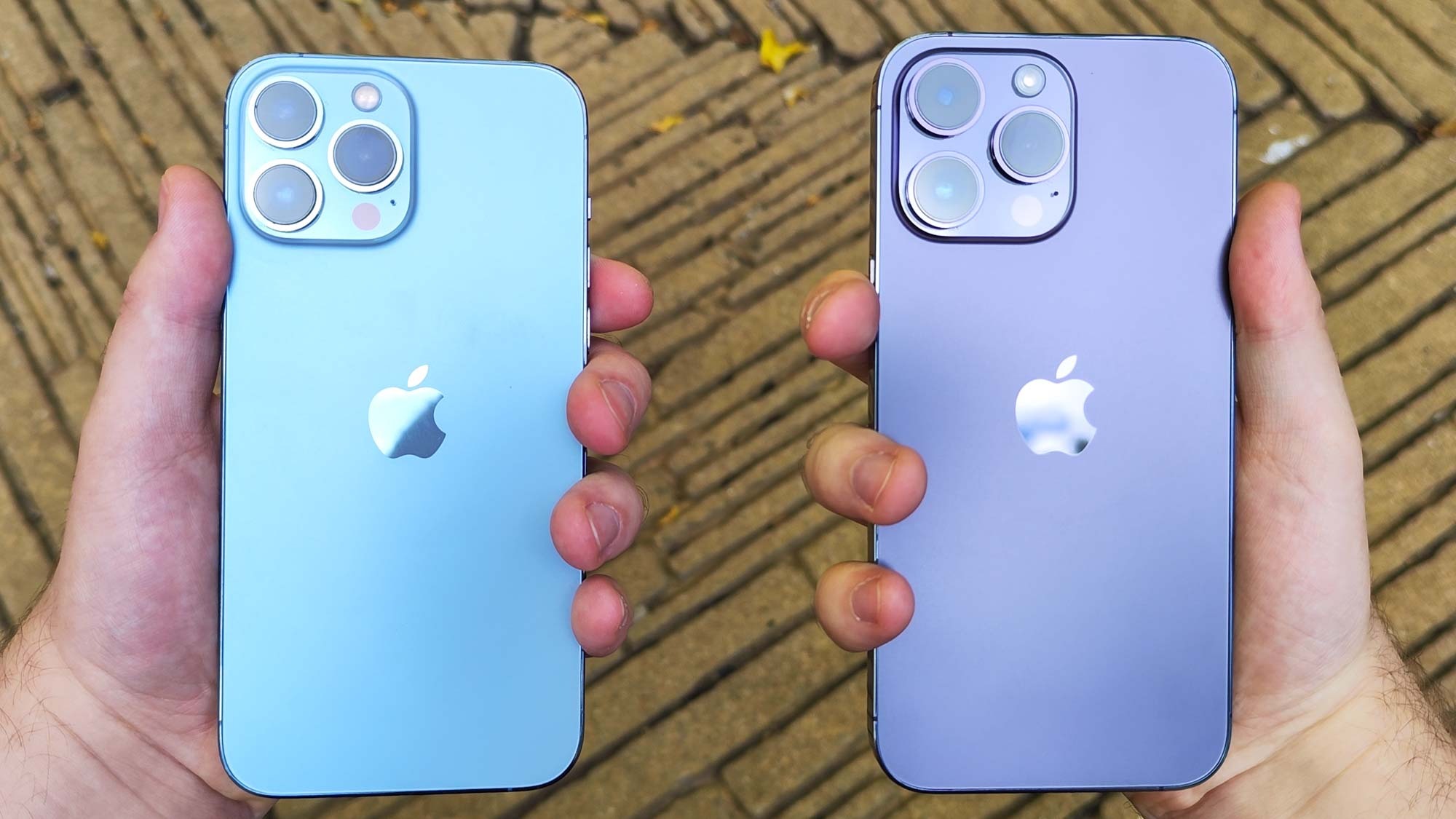I tested iPhone 14 Pro Max vs iPhone 13 Pro Max cameras — and the results are surprising
In this face-off between new and old iPhones, the difference is biggest at night

Having just swapped to the iPhone 14 Pro Max from an iPhone 13 Pro Max, it's not always clear how the photography experience has changed from one phone to the other. But after spending a lot of time staring at near-identical photos, I can confirm there is a change, and it's most obvious when there's less light.
Even though the specs sheets for the two iPhones are not dramatically different, the changes that are there multiply together to make some big differences. Apple's refinements can still be spotted during daytime photography, but the color and detail improvements on the iPhone 14 Pro Max are most clear when it's nighttime, and it can really flex its processing powers to bring out the best in its subjects.
You can read our overall iPhone 14 Pro Max vs. iPhone 13 Pro Max face-off if you want to see a more general comparison between the two iPhones. But here, we're going to drill down into what exactly Apple changed about the iPhone 14 Pro Max's cameras from the iPhone 13 Pro Max, and how that impacts its photos.
iPhone 14 Pro Max vs. iPhone 13 Pro Max: Camera specs
| Row 0 - Cell 0 | iPhone 14 Pro Max | iPhone 13 Pro Max |
| Main (resolution, aperture, sensor size) | 48 MP, f/1.8, 1/1.28" | 12MP, f/1.5, 1/1.7" |
| Ultrawide (resolution, aperture, sensor size) | 12MP, ƒ/2.2, 1/2.55" | 12MP, f/1.8, 1/3.5" |
| Telephoto (resolution, aperture, sensor size, zoom magnification) | 12MP, ƒ/2.8, 1/3.5", 3x | 12MP, f/2.8, 1/3.5", 3x |
| Selfie (resolution, aperture, sensor size) | 12MP, ƒ/1.9, 1/3.6" | 12 MP, f/2.2, 1/3.6" |
The iPhone 13 Pro Max (and the iPhone 13 Pro too) has a trio of 12MP cameras on the back. Those cover the roles of main, ultrawide and 3x telephoto duties. There's also one more 12MP camera on the front, a selfie snapper with a fixed focus.
The iPhone 14 Pro Max makes a few notable changes. The biggest is that its main camera now has a 48MP sensor, which can shoot at 12MP like before, or in full 48MP ProRAW mode for when you want to play around with shots in post. It also enables a new 2x zoom level by using the center of the sensor for greater flexibility, but it's also slightly smaller at 1/1.28" rather than 1/1.7".
On top of that, the front camera now comes with autofocus and a wider aperture, which makes taking in-focus selfies from different distances much simpler. There's also a larger ultrawide camera with a wider aperture for increased brightness. Finally, there's Photonic Engine, Apple's new photography processing software that aims to provide better colors and texture in photos, particularly in low light.
iPhone 14 Pro Max vs. iPhone 13 Pro Max shootout: the photos
We'll start with the selfie camera, since this portrait-mode shot of me effectively shows off what's changed between generations. The portrait cutout effect is basically the same on both phones, with the two mostly separating me from the background accurately. However, the differences on my face come down to color and detail.
Sign up to get the BEST of Tom's Guide direct to your inbox.
Get instant access to breaking news, the hottest reviews, great deals and helpful tips.
On the iPhone 13 Pro Max, I look almost tanned (which I certainly am not), with perfectly smooth skin. But the iPhone 14 Pro Max reveals the truth: I'm pretty pale, and I do in fact have pores in my skin. It's a more accurate, natural look that I've been looking for from iPhones for a while, and I'm glad it's finally here.
Of course, the main changes are found on the rear cameras, so I took a full batch of test shots both during the day and at night to see the differences. And while I think the day shots are fairly similar in quality, the iPhone 14 Pro Max really pulls ahead when the sun goes down.
To start with, we have this late afternoon shot, taken using the main cameras while looking at the Shard over St. George the Martyr's Church. The iPhone 14 Pro Max's image has much brighter highlights, but no other major differences between it and its predecessor's photo.
Next, an ultrawide shot of The Roebuck pub near Borough. The sky's paler in the iPhone 14 Pro Max's image, but more notably it's got better texture than the iPhone 13 Pro Max. You can really see how the brickwork on the building or the leaves in the trees are layered, whereas it's a bit flat on the older iPhone.
Using the telephoto to zoom in on a detail of the pub's architecture, the colors now seem more natural looking on the iPhone 13 Pro Max from my perspective, although the brighter sky on the iPhone 14 Pro Max is nice. The 14 Pro Max has an advantage with detail though, as you can make out the texture of the window beneath the smiley face on the pub more easily.
Now we move to the night mode shots, and it's here that Apple's Photonic Engine really kicks in to deliver improved results for the iPhone 14 Pro Max.
Take this main camera shot, looking again at the Shard but this time from London Bridge with the River Thames in the foreground. The main difference I notice here is that the iPhone 13 Pro Max's shot is noisier, particularly around the moon. The 14 Pro Max's image is sharper.
In this next main night shot of a classic London telephone box, we see there's more than just brightness. The iPhone 14 Pro Max has more deftly dealt with the highlights in this image, showing the light from the glowing sign and the light and shadow on top of the phone box more realistic. There's more detail, too, when you take a close look to examine the crown logo or the lines separating the panes of glass.
The new ultrawide camera on the iPhone 14 Pro Max comes into its own in this shot of the base of the Monument to the Great Fire of London. The lit areas of the image are warmer, which is not only more appealing but more natural. It helps bring out the details in the stone carving too, which fade into the darkness more on the iPhone 13 Pro Max.
Our last comparison point will be this telephoto shot, once again of the Shard. The iPhone 14 Pro Max's image remains the warmer and brighter one, while also bringing out other details like the house and the trees to help frame the shot up the street.
Final thoughts

The iPhone 14 Pro Max does indeed improve on the iPhone 13 Pro Max's already strong cameras, and the newer model deserves its spot over the old one on our best camera phone list. Apple's hardware, color science and detail upgrades have paid off, particularly in low-light images, although my favorite change of all is how much more natural images look, whether it's my face or the face of a building.
That said, I still don't think it's worth upgrading from the iPhone 13 Pro Max to the 14 Pro Max just for these camera upgrades. It may be worth it if you really want to mess around with the 48MP ProRAW mode, or if you like other new features like the Dynamic Island or always-on display. But for photography, let's keep things in perspective. The iPhone 14 Pro Max is the best camera phone around for consistent images, no matter the lens or the time of day. But the iPhone 13 Pro Max isn't that far behind.
Next: See how the Samsung Galaxy S23 vs iPhone 14 battle is shaping up.

Richard is based in London, covering news, reviews and how-tos for phones, tablets, gaming, and whatever else people need advice on. Following on from his MA in Magazine Journalism at the University of Sheffield, he's also written for WIRED U.K., The Register and Creative Bloq. When not at work, he's likely thinking about how to brew the perfect cup of specialty coffee.
